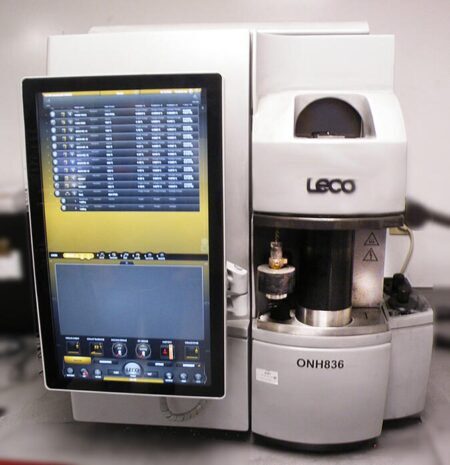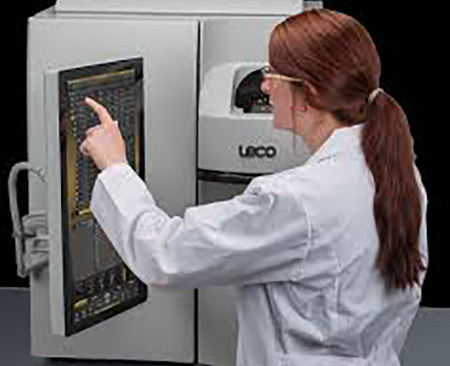Combustion Analysis
Combustion Analysis
Home » Chemical Analysis And Testing Services » Combustion Analysis
Combustion Analysis is performed by the process of combustion testing, which is the evaluation of the behavior of metals when exposed to high temperatures or fire. The analysis assesses the metal’s safety in fire-prone environments, ignition properties, and fire resistance. For combustion testing, samples of metal are tested in controlled fire conditions and toxic gas emissions, smoke production, flame spread, and heat release rates are measured.
Many industries conduct combustion testing to ensure the metals they use meet fire safety regulations, and to make data-driven decisions about material design and selection, ultimately protecting end-users from fire hazards.
LECO COMBUSTION ANALYSIS
CARBON-SULFUR ANALYSIS
Analysis of Iron, Aluminum, Low Alloy Steel, Stainless and Carbon Steel, Titanium, Copper, Nickel, and Cobalt Alloys
LECO, Lavoisier, Eichengrun, Combustion, and Oxygen, are used to determine the carbon and hydrogen in samples. The sample is heated in the presence of oxygen, and the combustion products, carbon and hydrogen, are quantified. With Carbon-Sulfur analysis, a solid metal is placed in a ceramic crucible and rapidly heated in an oxygen atmosphere, the carbon in the sample reacts with oxygen and is converted to carbon dioxide, and the sulfur reacts with oxygen and is converted to sulfur dioxide. The concentrations of carbon dioxide and sulfur dioxide are quantified using an infrared detector.
OXYGEN-NITROGEN ANALYSIS
Analysis of aluminum, titanium, nickel, copper, and cobalt alloys
Oxygen and nitrogen analysis by inert-gas fusion is an analytical technique that allows the simultaneous quantification of oxygen and nitrogen in metal samples. The solid metal sample is placed in a graphite crucible and rapidly heated in a helium atmosphere. The oxygen in the sample reacts with the carbon in the crucible, and the resulting carbon dioxide (CO2) is measured using an infrared detector. The oxygen concentration is then calculated by the instrument based on the CO2 measured and the known weight of the sample tested. Nitrogen is determined by a “thermal conductivity” technique. Helium acts as a carrier gas for nitrogen and the change in thermal conductivity is measured and related to the amount of nitrogen in the sample.
HYDROGEN ANALYSIS
Analysis of iron, titanium, cobalt, and nickel alloys
Hydrogen analysis by inert gas fusion-thermal conductivity is an analytical technique that allows the quantification of hydrogen in metal samples. The solid metal sample is placed in a graphite crucible and rapidly heated in an argon atmosphere. The hydrogen concentration is determined by an “inert gas fusion-thermal conductivity” technique. Argon acts as a carrier gas for the hydrogen, and the change in thermal conductivity is measured and related to the amount of hydrogen in the sample.To discover more about IMR’s combustion testing capabilities, click on a button below.



Combustion Testing Standards
ASTM E 1019 Standard Test Methods for Determination of Carbon, Sulfur, Nitrogen, and Oxygen in Steel, Iron, Nickel, and Cobalt Alloys by Various Combustion and Fusion Techniques ASTM E 1447 Standard Test Method for Determination of Hydrogen in Titanium and Titanium Alloys by Inert Gas Fusion Thermal Conductivity / Infrared Detection Method ASTM E 1409 Standard Test Method for Determination of Oxygen and Nitrogen in Titanium and Titanium Alloys by the Inert Gas Fusion Technique How long does combustion testing take?
Some combustion tests can be completed in a matter of minutes, where others take a few hours or days. The length of the test depends on the following factors, sample size, test type, data collection, and repetition. Contact an expert at IMR Test Labs to get further details on the test you What type of sample is required for combustion testing?
Common sample shapes include a disc, rectangle, cylinder, or chip and should be large enough to garner accurate measurements. Depending on the test, the sample may need to be prepared by machining, polishing, or cutting. What types of materials undergo combustion testing?
Combustion testing can be performed on many materials, including composites, building materials, textiles, plastics, and electrical components. IMR Test Labs specializes in the combustion testing of metals, including Iron, Aluminum, Low Alloy Steel, Stainless and Carbon steel, Titanium, Copper, Nickel, and Cobalt Alloys. Request a quote today.
Key Reasons for Combustion Analysis
Material Characterization
Material identification, compliance with industry standards, and quality control.
Fire Safety
Fire behavior, flammability, response to fire exposure, and heat release rates.
Environmental
Pollutant release, emissions, effect on air quality, environmental compliance.
Material Development
New polymer, composite, and advanced material development.
Industries that use Combustion Analysis
Aerospace
Metal components used in aircraft are tested to ensure safety, reliability, and compliance with aviation regulations.
Automotive
Engine parts and exhaust systems are subject to high temperatures or exposure to flames and must be tested prior to use.
Manufacturing
Various items in many fields of manufacturing are metal and must be safe during production and handling.
Military
Performance and safety are critical in military and defense use-case scenarios, ships, equipment, and vehicles must be in compliance with safety standards and resistant to high temperatures and fire.
Oil and Gas
Equipment and pipelines used in the oil and gas industry are subject to testing to ensure fire resistance.
Construction
Building materials like steel beams are tested for fire safety and to ensure they meet the codes and regulations of the building.
RELEVANT ACCREDITATIONS
Click here for a complete list of accreditations and certifications for all IMR Test Labs locations.


